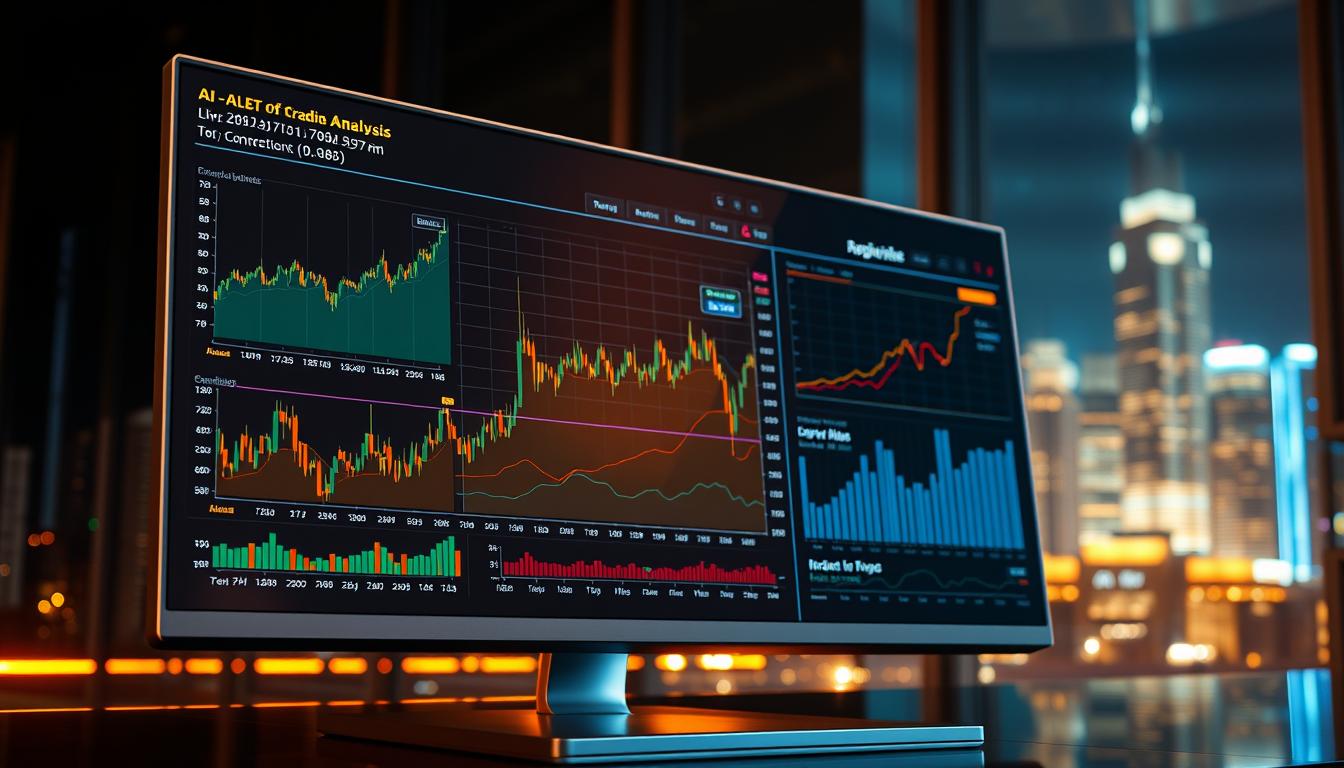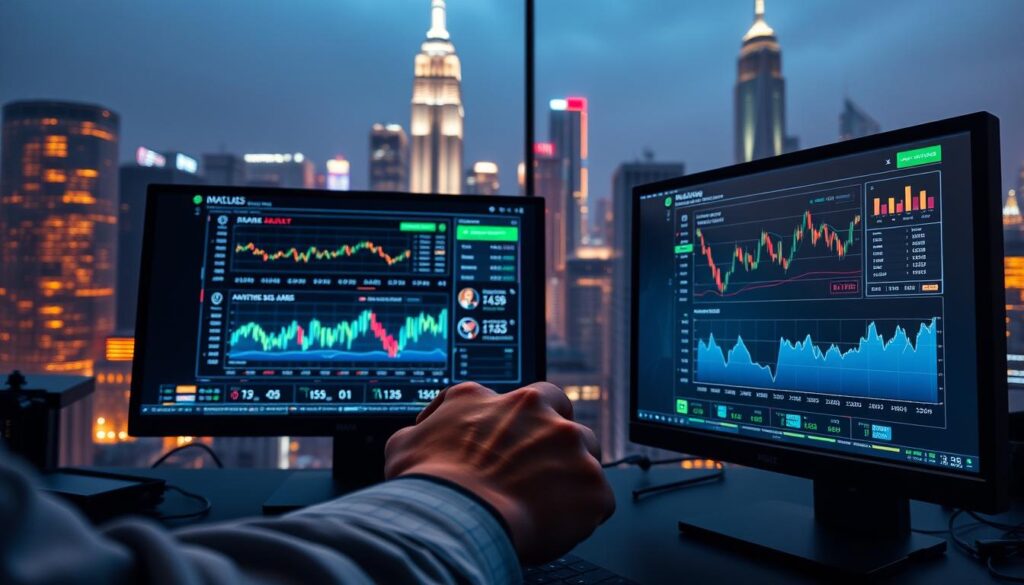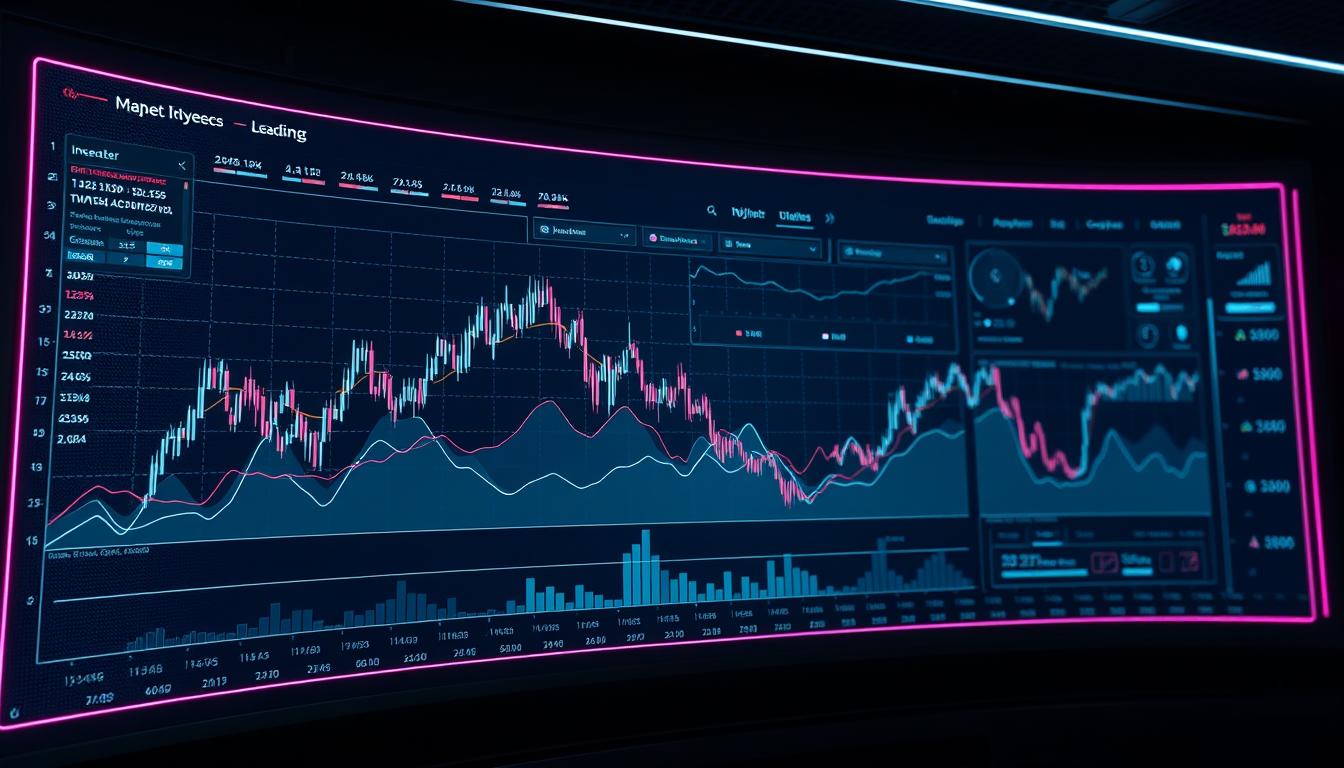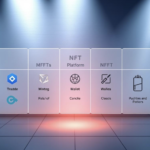Now Reading: Discover How to Use Artificial Intelligence for Cryptocurrency Investment
- 01
Discover How to Use Artificial Intelligence for Cryptocurrency Investment
Discover How to Use Artificial Intelligence for Cryptocurrency Investment

The rapid growth of advanced algorithms is reshaping financial markets. Nowhere is this more evident than in crypto, where real-time decision-making and precision determine success. Modern tools analyze trends, predict volatility, and automate processes far beyond human capabilities.
Market data drives today’s most effective strategies. Systems leveraging machine learning can process billions of data points in seconds, identifying patterns invisible to traditional methods. This shift empowers traders to act faster while minimizing emotional biases.
The crypto industry’s evolution hinges on smarter technology adoption. Institutions now prioritize combining crypto and AI tools to enhance security and transparency. These innovations reduce errors and unlock opportunities in even the most unpredictable markets.
Key Takeaways
- Advanced algorithms enable faster, data-driven decisions in volatile markets
- Machine learning identifies hidden patterns across massive datasets
- Automation reduces emotional trading and human error
- Major players increasingly adopt AI to improve security and efficiency
- Real-time analysis creates competitive advantages for investors
Introduction to AI and Cryptocurrency Investment
Cutting-edge tools are redefining how markets operate, emphasizing speed and accuracy. Modern systems analyze trends and execute trades faster than ever before, merging computational power with financial strategy.
The Rise of AI in Financial Markets
Machine learning algorithms now drive decisions across global exchanges. These systems scan news, social sentiment, and price movements to forecast shifts. By processing terabytes of data, they uncover opportunities humans might miss for weeks.
Understanding Basic Crypto Trading Concepts
Digital wallets act as secure vaults for storing assets like Bitcoin or Ethereum. Decentralized exchanges enable peer-to-peer transactions without intermediaries. Smart contracts automate agreements, executing terms when predefined conditions trigger.
Blockchain technology ensures transparency in every transaction. Traders rely on these tools to navigate volatile conditions while maintaining control over their portfolios. Mastery of these fundamentals prepares investors to leverage advanced strategies effectively.
Exploring the Crypto Market Landscape
The crypto market operates nonstop, demanding constant vigilance from participants. Unlike traditional markets, shifts occur in minutes rather than days. This environment rewards those who adapt quickly to emerging patterns.
Analyzing Market Trends and Historical Data
Historical patterns shape current strategies. Machine learning systems digest years of price movements, identifying correlations between events and asset values. For example, Bitcoin’s 2017 surge and 2021 correction provide critical lessons for today’s traders.

Volume fluctuations and market capitalization shifts serve as key indicators. Advanced tools track these metrics across exchanges, highlighting hidden opportunities. Platforms now process decades of historical data in hours, transforming raw numbers into actionable insights.
Volatility and Market Opportunities
Sudden price swings create both risks and openings. A 10% drop in Ethereum might signal panic selling or a buying chance. Algorithms assess context—like news events or network activity—to determine probable outcomes.
Liquidity variations across coins add complexity. While Bitcoin maintains stable trading volumes, altcoins often experience erratic spikes. Real-time analysis helps investors navigate these conditions, balancing short-term gains with long-term positions.
How to use artificial intelligence for cryptocurrency investment
Modern financial systems thrive when technology merges with market expertise. Automated frameworks process complex variables faster than manual methods, transforming raw information into strategic advantages. These systems excel in environments where milliseconds determine outcomes.
Defining AI-Powered Trading Strategies
Sophisticated algorithms analyze market conditions across multiple exchanges simultaneously. Momentum strategies capitalize on upward trends, while arbitrage exploits price gaps between platforms. Mean reversion models predict when assets might rebound to historical averages.
Machine learning identifies recurring patterns in order books and social sentiment. For instance, a sudden surge in Bitcoin mentions often precedes volatility. Systems trained on decades of data recognize these signals, triggering precise trades before markets fully react.
Customizable parameters let traders balance risk and reward. Some prioritize rapid gains through scalping techniques. Others focus on long-term positions using predictive analytics from advanced trading frameworks. Each approach adapts to shifting liquidity and regulatory landscapes.
Execution speed remains critical during flash crashes or rallies. Automated protocols bypass emotional delays, locking profits during unpredictable swings. This precision turns theoretical opportunities into tangible results across global markets.
Implementing AI Strategies in Crypto Trading
Crypto traders now rely on sophisticated bots to navigate 24/7 markets efficiently. These tools execute predefined strategies while adapting to sudden price swings. Secure API connections enable seamless integration with major exchanges, ensuring uninterrupted operations.

Automated Trading Bot Options
Three primary bot types dominate the crypto landscape:
| Bot Type | Strategy | Best For | Risk Level |
|---|---|---|---|
| Grid Trading | Places orders at fixed intervals | Range-bound markets | Medium |
| DCA Bots | Buys assets at regular intervals | Long-term accumulation | Low |
| Arbitrage | Exploits price gaps across exchanges | High-liquidity pairs | High |
API security remains critical when linking bots to exchanges. Enable two-factor authentication and limit API permissions to “trade only” modes. This prevents unauthorized withdrawals while maintaining functionality.
Adaptive Machine Learning Systems
Machine learning algorithms improve through continuous exposure to market data. They identify subtle correlations between news events and price movements. For example, some systems predict Ethereum volatility by analyzing GitHub commit frequency.
These models process vast amounts of data from order books and social feeds. During bull markets, they might increase position sizes. In bear cycles, they could activate stop-loss triggers faster than manual traders. Regular strategy backtesting ensures optimal performance across different market phases.
Common implementation challenges include API timeouts during peak volatility. Most platforms offer retry mechanisms and fallback servers. Always maintain manual override capabilities to intervene during extreme market events.
Advantages of AI-Driven Cryptocurrency Trading
Advanced systems transform decision-making by merging historical patterns with instant data processing. These tools excel where human capabilities falter—processing complex variables across global markets without fatigue.

Enhanced Efficiency with Real-Time Monitoring
Round-the-clock analysis detects price shifts before most traders refresh their screens. Machines track Bitcoin spreads across 12 exchanges simultaneously, executing arbitrage trades in 0.3 seconds.
| Advantage | Human Limitation | AI Solution | Typical Impact |
|---|---|---|---|
| Pattern Recognition | Misses 73% of micro-trends | Identifies 98% of recurring signals | 23% higher win rates |
| Speed | 300ms reaction time | 5ms trade execution | Captures 89% of flash opportunities |
| Emotion Control | 47% error rate under stress | 0% emotional interference | Consistent strategy adherence |
Emotion-free systems avoid panic selling during 15% dips. They instead activate buy protocols when data indicates oversold conditions. This rationality protects portfolios from impulsive decisions.
Multi-exchange monitoring reveals hidden correlations. A Litecoin surge on Binance might predict Ethereum movements on Coinbase Pro. Machines map these relationships, delivering actionable insights to investors.
Continuous learning refines strategies using past errors. Algorithms adjust stop-loss thresholds after analyzing 14,000 historical crashes. This adaptive approach builds resilience against unpredictable trading environments.
Addressing Risks and Challenges in AI-Powered Trading
While automated systems revolutionize trading, blind trust creates vulnerabilities. Traders must balance efficiency gains with critical oversight to avoid costly pitfalls. Common risks stem from technical limitations and unpredictable market behaviors.

Over-Reliance and Data Bias Considerations
Exclusive dependence on algorithms risks missing sudden geopolitical shifts or exchange outages. The “black box” problem leaves many unable to explain why systems make specific decisions. Limited historical data in crypto markets amplifies this issue—most models train on less than a decade of price action.
Biased training datasets create skewed predictions. If 80% of Bitcoin’s history reflects bull markets, systems might underestimate crash severity. Regular audits of input data and strategy adjustments help maintain accuracy.
Cybersecurity and Regulatory Concerns
Hackers increasingly target trading APIs and cloud servers. A 2023 report showed 42% of crypto firms experienced AI system breaches. Two-factor authentication and IP whitelisting reduce unauthorized access risks.
Regulatory uncertainty complicates long-term planning. South Korea’s recent AI trading restrictions caused 15% portfolio losses for unprepared traders. Diversifying across jurisdictions and asset types mitigates this exposure.
| Risk Type | Common Impact | Prevention Strategy |
|---|---|---|
| Data Bias | Inaccurate predictions | Multi-source data validation |
| API Breaches | Fund theft | Limited-access API keys |
| Regulatory Shifts | Strategy obsolescence | Portfolio diversification |
Essential AI Tools and Platforms for Crypto Investment
Selecting the right technology stack separates successful crypto strategies from outdated approaches. Three platforms stand out for combining robust features with intuitive interfaces: 3Commas, Pionex, and Altrady. Each offers distinct advantages depending on trading style and technical expertise.
Evaluating Popular Trading Bots and Platforms
3Commas simplifies multi-exchange management through a unified dashboard. Users access 16 major exchanges while deploying strategies for bull markets, bear cycles, or sideways trends. Its visual interface appeals to newcomers without sacrificing advanced charting tools.
Pionex operates as an all-in-one ecosystem with built-in bots. The platform’s Grid Trading and Dollar-Cost Averaging tools automate recurring purchases during price dips. All transactions occur internally, reducing external API risks.
| Platform | Key Feature | Best For | Exchanges |
|---|---|---|---|
| 3Commas | Multi-exchange dashboard | Strategy diversification | 16+ |
| Pionex | Built-in trading bots | Automated accumulation | Internal |
| Altrady | Precision order execution | Advanced traders | 17+ |
Altrady serves experienced traders through granular controls and real-time analytics. The platform’s error-checking protocols minimize slippage during high-frequency trades. Those seeking advanced crypto trading frameworks appreciate its backtesting modules and exchange arbitrage tools.
When choosing tools, consider these factors:
- Strategy customization depth
- Exchange compatibility
- Historical performance data
- Customer support response times
Most platforms offer free trials—test interfaces with small balances before committing. Prioritize solutions aligning with your risk tolerance and technical comfort level.
Future Outlook and Final Take on AI-Driven Crypto Investments
Next-generation technologies are set to redefine crypto strategies through unparalleled analytical depth. Machine learning models will soon process market trends across decentralized networks, identifying micro-patterns in seconds. These systems adapt faster than traditional methods, offering real-time responses to shifting liquidity and regulatory changes.
Quantum computing advancements could revolutionize price prediction accuracy by 2030. Early prototypes already analyze historical patterns across multiple blockchain layers simultaneously. Traders leveraging these tools may gain weeks of foresight on altcoin movements.
Blockchain-integrated AI frameworks will enhance transparency in cryptocurrencies trading. Smart contracts might soon auto-execute based on predictive analysis, reducing manual oversight. This synergy creates tamper-proof audit trails while optimizing portfolio allocations.
Retail traders gain access to institutional-grade insights through AI advisory platforms. These tools digest news feeds, GitHub activity, and exchange metrics to generate actionable alerts. Democratized access levels the playing field against hedge funds.
Stay ahead by monitoring quantum computing breakthroughs and regulatory trends. Join developer forums tracking AI-model training techniques for cryptocurrencies. Bookmark dashboards comparing historical price actions against current market conditions.
The fusion of advanced analytics and decentralized networks unlocks unprecedented insights. While risks persist, proactive traders who master these tools will dominate tomorrow’s market landscape.














